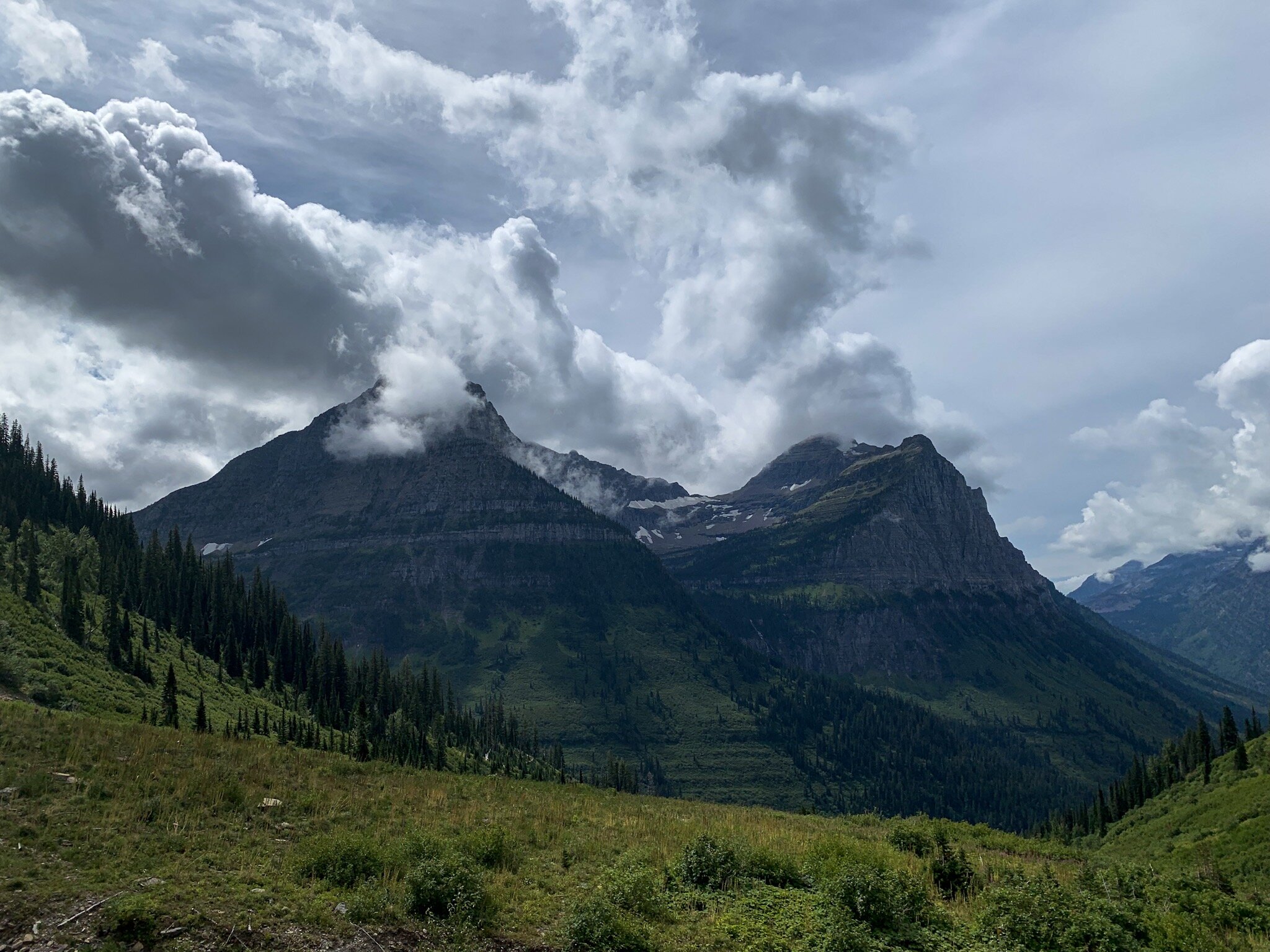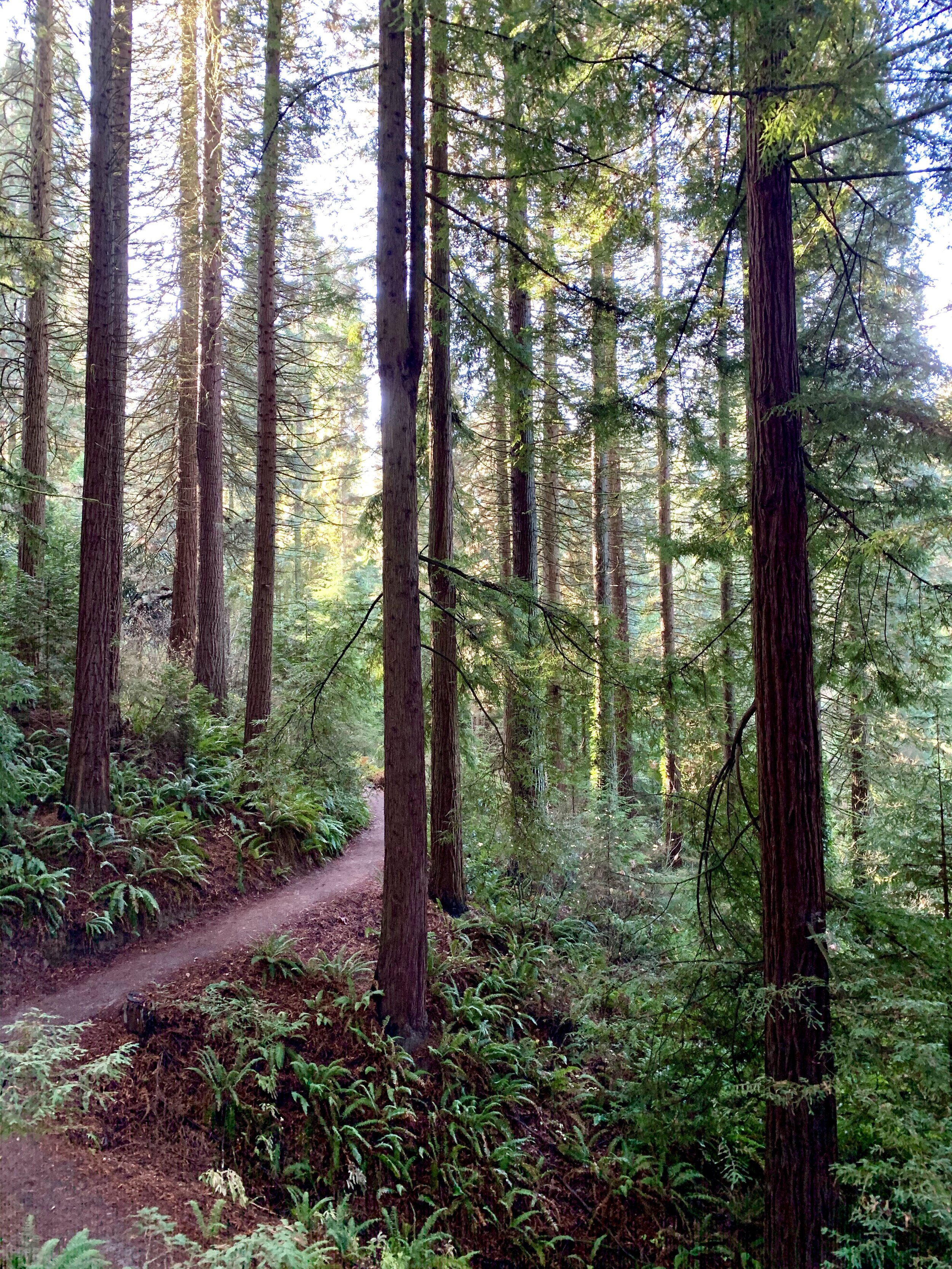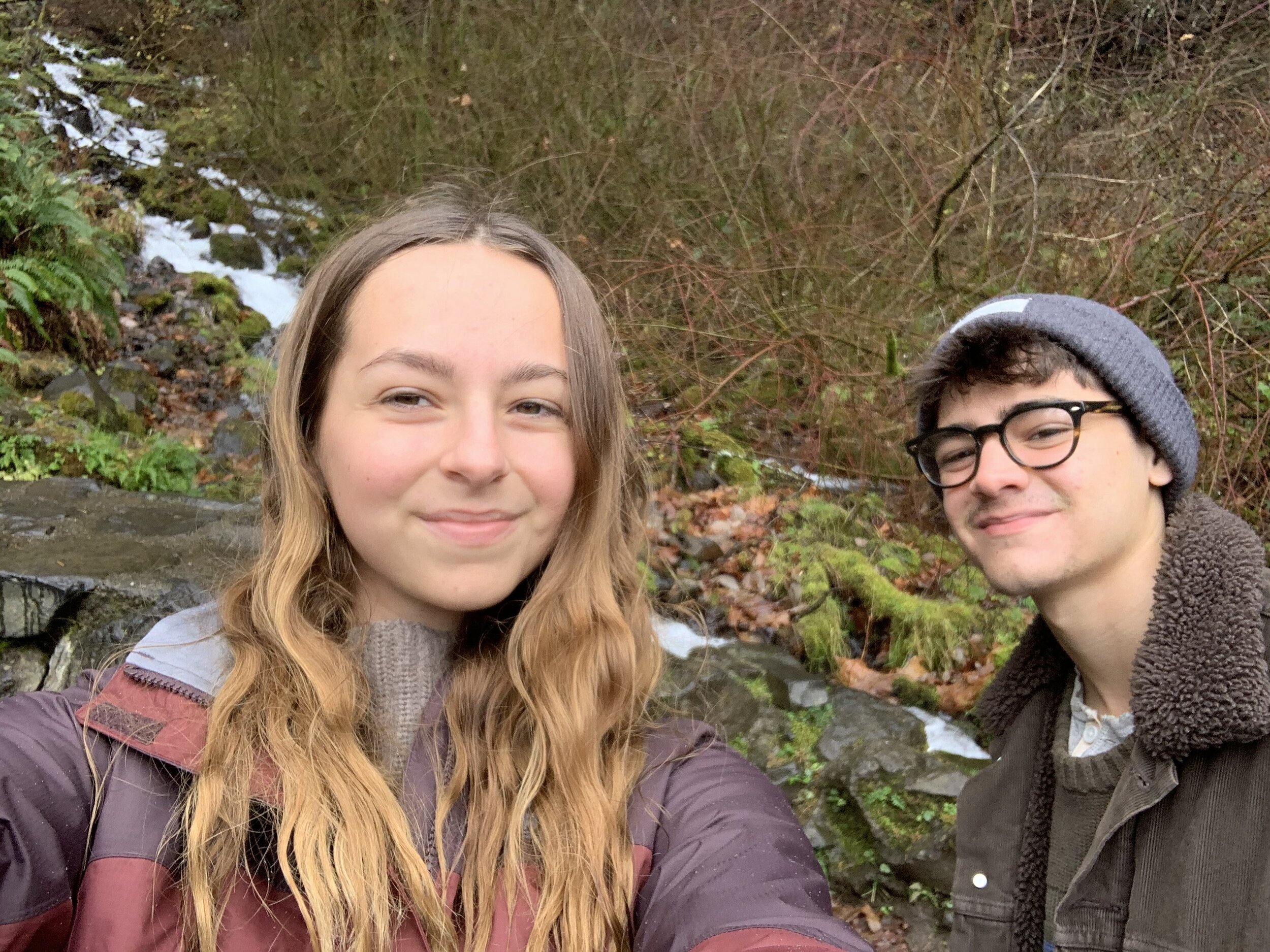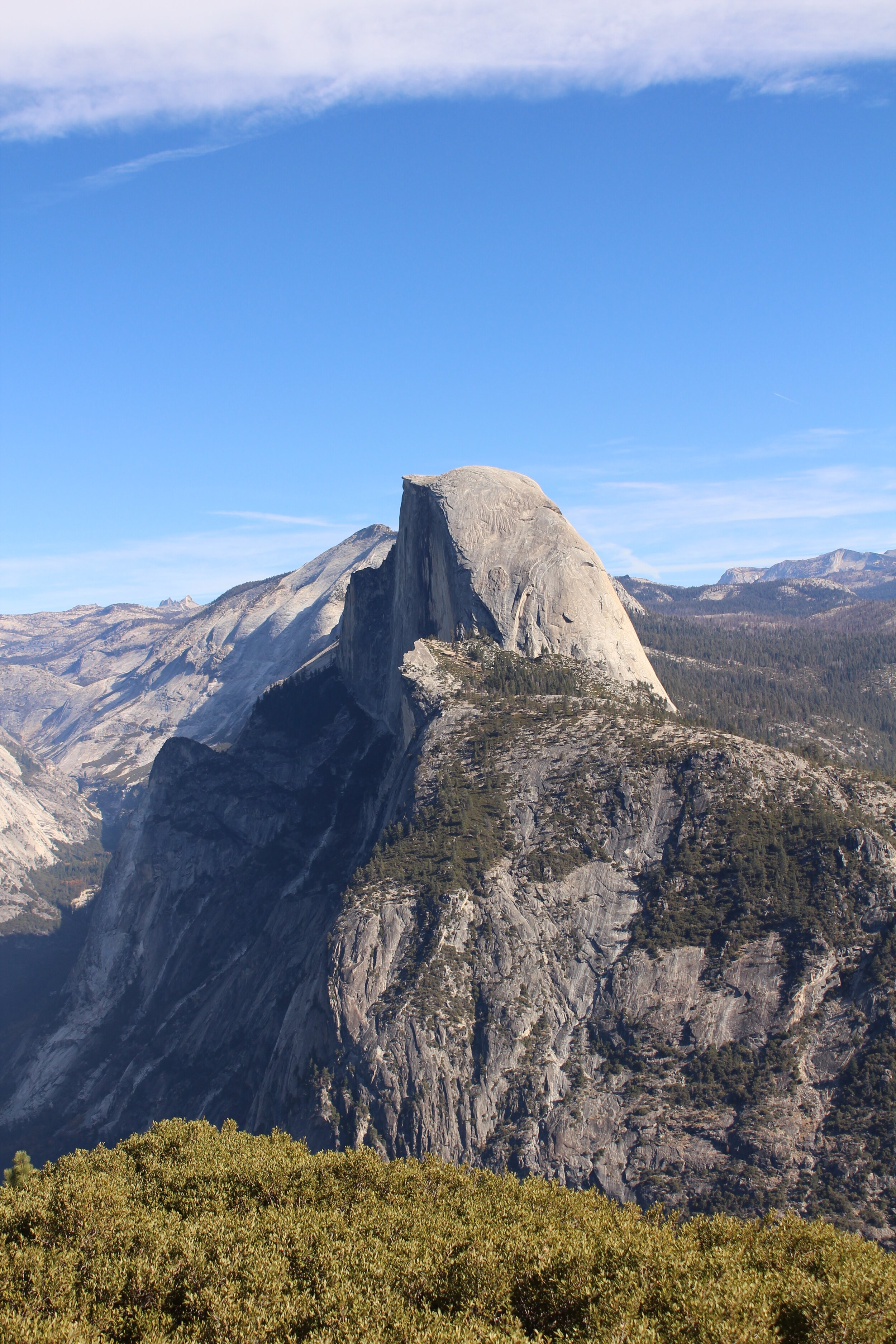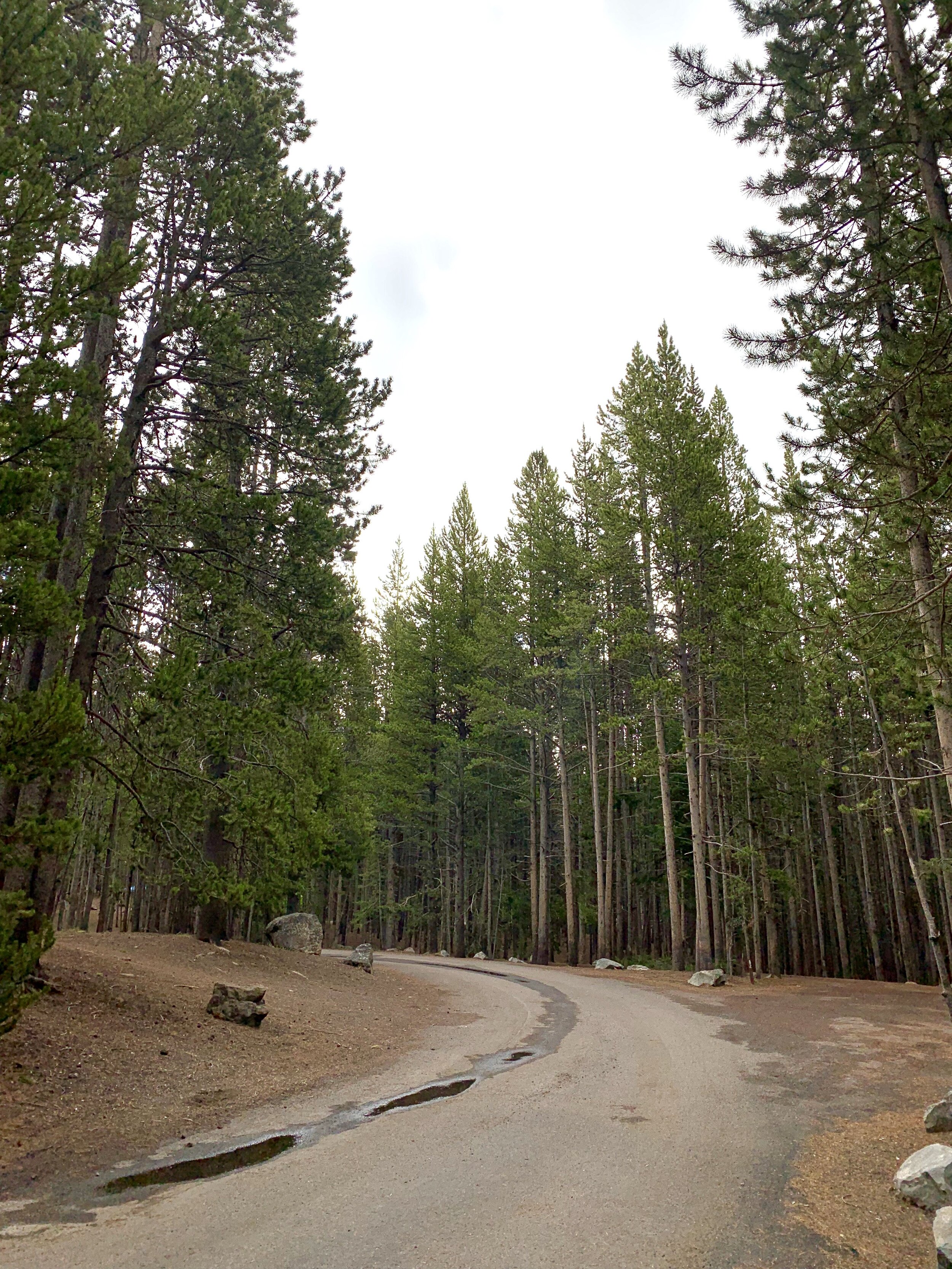It’s no secret that mountains are my favorite landscape. I’ve traveled the entire continental 48 and visited the most famous mountain ranges in the country (minus Alaska). For people who are new to the outdoors, learning the country’s geography can be confusing, especially because some of these mountain ranges are absolutely huge, stretching into Canada at times.
This is my quick guide to the four most famous mountain ranges in the US. You might’ve heard of them, and if you haven’t, you’ll be adding them to your list by the time you’re finished reading.
Note: this post may contain affiliate links
Glacier National Park, part of the Rocky Mountains, located in Montana
The Cascade Mountains
The Cascades is one of the bigger mountain ranges in the country, stretching from Northern California to British Columbia, Canada. Many of the western mountain ranges include volcanoes, and the Cascades are no exception. The Cascades are home to famous mountains such as Washington’s Mount Rainier and Oregon’s Mount Hood. The Cascades also include North Cascades National Park in northern Washington, a national park interspersed with forest land, and one of the most dog friendly parks in the country.
I love the Cascade Range. It’s full of incredible views and is located in what I would consider one of the best regions of the United States, the Pacific Northwest. It’s home to some of the most challenging, as well as some of the most beautiful hikes I’ve ever completed, and I definitely plan on returning in 2020. I highly suggest having some good gear for your time in the Cascades, and don’t attempt any hikes you don’t know for sure you’re prepared for.
North Cascades National Park, part of the Cascade Mountain Range, located in Washington
The Sierra Nevadas
I’ve visited the Sierras a few times, during small trips to Sequoia and Kings Canyon National Parks, two national parks connected by a road through forest land, as well as larger trips to Yosemite. And no matter what time of year you visit, they’re absolutely beautiful, and are home to the tallest mountain in the continental 48: Mount Whitney, which stands at 14,505 feet tall.
The Sierra Nevadas stretch horizontally across the states, rather than vertically like the other ranges on this list, and lie between California’s Central Valley and the Great Basin in Nevada, although most of the mountain range is located in California. It includes both Sequoia and Kings Canyon National Parks, the Sequoia National Forest, the Inyo National Forest, Devils Postpile National Monument, and the famous Yosemite National Park.
Half Dome in Yosemite National Park, part of the Sierra Nevadas, located in California
The Appalachian Mountains
The most famous mountain range east of the Mississippi, the Appalachian Mountains stretch across the eastern United States. The Appalachians are home to one of the most famous thu-hikes in the country: the Appalachian Trail, and include famous spots such as Great Smoky Mountains National Park (the most visited National Park in the country), and the Blue Ridge Mountains. While these mountains don’t quite reach the heights that the other ranges on this list do, they once did, but due to their age, have eroded. Now, the highest point in the Appalachians lies at only 6,683 feet.
The Appalachians are absolutely gorgeous. I’ve done some absolutely beautiful hiking there, in the Smokies and in Shenandoah National Park. While they aren’t as tall as my mountains out west, they’re often far greener than anything I’m used to seeing due to the amount of rain they get back east.
The Great Smoky Mountains, part of the Appalachian Mountains, located in Tennessee and North Carolina
The Rockies
The Rocky Mountain Range is one of the largest mountain ranges in the area, stretching from Canada all the way to New Mexico. Of course, the most famous spot in the Rockies is Rocky Mountains National Park in Colorado, which is why we often refer to the part of the Rockies located in the states as the “Colorado Rockies.” You’ll be surprised to find out, though, that some of the other famous mountains in the middle of the country are actually part of the Rockies as well, including the Grand Tetons and Glacier National Park.
The Rockies are home to some of the biggest and most beautiful mountains I’ve ever seen. Most parts of them are extremely cold due to their elevation, the tallest mountain in the range being Mount Elbert in Colorado, standing at 14,440 feet. Apart from tall mountains, I’ve seen some of the most incredible wildlife in the Rockies, from mountain goats, grizzly bears, and big horned sheep in Glacier to elk and deer in Colorado’s Rocky Mountains National Park.
(When hiking in these areas, please carry bear spray, especially if you’re hiking solo. I never once felt that I was in danger, but it’s always good to be prepared for anything.)
The Grand Tetons, part of the Rocky Mountains, located in Wyoming
Of course, there are plenty of other, smaller mountain ranges in the country, and a few I haven’t explored yet, up in Alaska, but if you’re starting to plan your trip around the US, these are four sections of the country you definitely can’t pass up, especially if you’re a hiker, camper, or general lover of the outdoors. These mountains have left a mark on me as a traveler, and I can’t wait to return to them in the future.
Which one is on the top of your 2020 bucket list? Let me know in the comments!
If you’re planning a 2020 (or whenever!) trip around the US and want to include all four of these beautiful places, my ebook, Around the States in 90 Days will be a great resource for you. Check it out in the shop!





